Industry Audit 2007
For the sixth year in a row, Pharm Exec invites Professor Bill Trombetta of St. Joseph’s University to analyze the pharma industry's financial performance with a battery of business metrics, old and new. The highlights: Genentech pulls ahead of its longtime rival, Amgen. Forest delivers another strong performance, despite dropping revenue. Schering-Plough is building enterprise value. Biogen Idec racks up a stellar profit margin. And Merck? Well, Merck is back, baby. And the winner is…
For the sixth year in a row, Pharm Exec invites Professor Bill Trombetta of St. Joseph’s University to analyze the pharma industry's financial performance with a battery of business metrics, old and new. The highlights: Genentech pulls ahead of its longtime rival, Amgen. Forest delivers another strong performance, despite dropping revenue. Schering-Plough is building enterprise value. Biogen Idec racks up a stellar profit margin. And Merck? Well, Merck is back, baby. And the winner isâ¦
Pharmaceutical Executive's Sixth Annual Industry Audit analyzes the 2006 performance of 16 companies that are publicly traded on stock exchanges and file 10-K reports with the Securities and Exchange Commission (or 20-F reports, in the case of foreign companies). As in past years, the audit goes beyond standard accounting and financial statements, drawing on newer and—arguably—more meaningful metrics, such as sales per employee and percentage of income driven by intellectual capital. Data were gathered primarily from 10-Ks and 20-Fs. In addition, we consulted databases, such as finance.yahoo.com and Hoovers, and secondary sources, such as Fortune, Business Week, In Vivo, the Wall Street Journal, and the New York Times.
Methodology
Aiming to compare companies' performance, this report omits a few companies that are or appear to be publicly traded but that are not comparable with the rest of the group: extremely diversified firms (such as Procter & Gamble), narrow-focus companies (such as Novo Nordisk), companies that manufacture primarily generics (such as Teva), firms with unconventional ownership structures (like Roche), and companies whose financial reporting doesn't mesh with US standards (like Japanese drug firms).
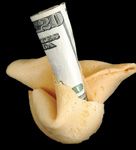
Companies were assigned scores based on their rankings over 15 metrics. The company that ranked first in a given metric received a rank score of 16, the second place company had a rank score of 15, and so on.
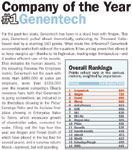
Not all metrics are equal. Some charts have been included to provide context, but they didn't factor into the rankings. The rest were weighted from 3 to 7, with 3 reflecting the lowest and 7 the highest weight. For example, if a company received a score of 12 out of 16 on a metric weighted at 5, it would receive 12 times 5—60—points. A company's points over each of the metrics were then totaled for a final score.

Drug Revenue
Once again, Pfizer leads the pack at $45.1 billion, and Biogen Idec brings up the rear at $1.8 billion.

The key point here is not absolute revenue but change in revenue. Maureen Dowd, in her weekly New York Times column, reminded us of the importance of growth. She recalled the classic Woody Allen movie Annie Hall, where Woody Allen's character says to Diane Keaton's character: "A relationship is like a shark. It has to constantly move forward or it dies. And I think what we got on our hands is a dead shark." Some companies in our sixth annual report are resembling dead sharks. Grow or you die.

Three firms—Bristol-Myers Squibb, Abbott, and Forest—dropped in drug revenue, and another five failed to hit the average growth rate of 8.3 percent. It is important to note that the Price to Earnings Ratio reflects expectations of future earnings growth (see page 90). That growth can come from higher sales, increased profit, or both. But today's investors seek evidence of top-line growth and the quality of those top-line sales numbers. Profits that come from cost cutting and ever-increasing efficiency are not as valuable as earnings that come from internal, organic sales growth, because sales revenue increases are considered more sustainable.

You might think it's tough to produce revenue growth if you are Pfizer at $45 billion in sales or GSK or Sanofi-Aventis. Consider GE and Procter & Gamble, at $160 billion and $72 billion revenues, respectively. Yet each company seeks, and is achieving, organic growth: GE at about 8 percent and P&G at 4 to 6 percent. That means that GE has to come up with $13 billion of new revenue a year and P&G, almost $4 billion. That makes Pfizer's and GSK's situations look like a day at the beach.

It is a breath of fresh air to see how Jeffrey Immelt, the CEO of GE, imagines growth: GE has a $17 billion healthcare business that competes in a $4 trillion industry that's growing 8 percent a year; he thinks GE Healthcare can grow 8 percent a year. In the United States' $13 trillion economy, Pfizer's $45 billion is a grain of sand in the desert.

Enterprise Value
If you were alone on an island and could bring only one metric with you, Enterprise Value would be it: The Mother of All Metrics. Enterprise Value takes into account a firm's market capitalization (number of shares outstanding multiplied by the price of the stock on a given day) plus liabilities minus cash, or about what it would take to buy a company. Enterprise Value to Sales (that is, Enterprise Value normalized for scale) and Change in Enterprise Value are critical metrics.
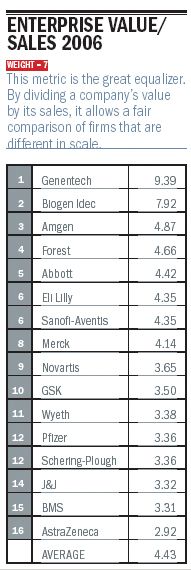
Schering-Plough, Merck, and Abbott set the pace in Change in Enterprise Value, while seven of the Sweet Sixteen saw shareholder value erode in 2006.

Meanwhile, in Enterprise Value to Sales, Genentech—at 9.39—is double most of its peers.
Gross Margin
Gross Margin tells you how good you are at pricing. The higher it is, the better. And no industry sports higher gross margins than the drug industry. Biogen Idec serves as the yardstick for 2007, with a GM of almost 89 percent, followed by Genentech and Amgen. No surprise here, with the three classic biotechs capitalizing on super-high-priced biologics. And then Pfizer—noted for never, ever competing on price—comes in at number four. With the average GM for the Sweet Sixteen at 75 percent, note how Abbott and Schering-Plough continue to struggle in pricing.

But the interesting pattern here is how stiff the rankings are from year to year. That is, the placements are almost identical from 2005 to 2006 with minor flip-flops here and there. The significance of this is that there is no price competition among the big pharmas. If I can spot this, so can the Department of Justice and every state antitrust section very concerned over very high drug prices and the absence of any price competition (except for the generics). The recent conviction of three drug firms on reimbursement overcharges should be a wake-up call to the industry to make pricing a strategic priority and not just a tactical routine.

Return on Assets
When you multiply the profit margin (Profit/Sales) by Sales/Assets, you get a very important metric: Return on Assets, or Profit to Assets (P/A). Remember the old chestnut about a triple threat in football: someone who was good at passing, running, and kicking? The point is that it is difficult to excel in any one of these skills, let alone two or three. Pharma should look for the Double Threat: excellence in margin management (P/S) and asset management (S/A). It is tough enough to excel in just one of these metrics, so special recognition should go to those firms that do well in both, resulting in superior performance.

Forest is in a class by itself in asset management and just average on margin management, but the strong performance on Sales to Assets propels it into first place overall on Profit to Assets.

Genentech has really kicked up performance in Sales to Assets since last year, along with its high gross margin and margin management, placing the company third in Profits to Assets.
Johnson & Johnson is mediocre at margin management and weighed down a bit by lower margins on the 30-plus percent of revenues accounted for by OTC. But its strong second-place ranking on S/A take it to number four on Profit to Assets.

Sales Per Employee
This metric is difficult to manipulate—there's no smoke and mirrors here. Just a basic ranking of which company does the best job at getting the most out of its employees. The biotechs win hands-down here, with their 80 percent markups and $50,000-a-year biologics using small sales forces to call on niche specialty physicians. Having said that, note Forest's outstanding performance coming in third. Pfizer is the best major pharma in productive employees at fifth place, followed by J&J. Just as an interesting point of comparison, IMS's employee productivity is approximately $400,000 per employee.

Return on Invested Capital
If you were stranded on your island but you could have a second metric, it would be return on invested capital (ROIC). Return on Investment is a lot like family values. It is in the eye of the beholder and just as difficult to measure. But ROIC does cover some hard measures, like the cost of debt and of stock (like the classic Stern Stewart Economic Value-Added rationale). In other words, if you put EBITDA (Earnings Before Interest, Taxes, Depreciation and Amortization) over total debt plus value of common stock, that return should at least cover the Weighted Average Cost of Capital (WACC). Given the approximate WACC at around 12 percent, a number of the Sweet Sixteen are not enhancing shareholder value. The average ROIC of the Sweet Sixteen is 12.7 percent for 2006. Forest is out front at double WACC, followed closely by J&J and Pfizer. If a company is not at least covering the weighted average cost of capital, it is destroying shareholder value.

Which Big Pharma Is the "Smartest"?
In an industry driven by innovation, we need a metric that takes into account a company's intellectual capital. Such a metric would encompass the value of drug brands, the corporate brand, the pipeline, and other indicators of innovation that may not be limited to technology or science.

One such approach is based on the work of Baruch Lev, an accounting professor at New York University's Stern School of Business (see "Accounting Gets Radical," Fortune, April 16, 2001, for an excellent, user-friendly article on his methodology).
Lev starts with a firm's net income before taxes. Then he allocates how this income is derived over the three basic kinds of assets that produce sales: cash assets; property, plant, and equipment; and intellectual property. According to Lev, cash assets earn an average of 4.5 percent. So 4.5 percent multiplied by a firm's cash assets gives an approximation of income due to cash assets.
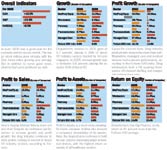
Property, plant, and equipment over the years, net of depreciation, gets a similar treatment. They earn, on average, 7 percent. So 7 percent times the value of property, plant, and equipment gives you the income driven by these assets. To calculate the Return on Intellectual Property, take net income before taxes, subtract the return on income due to cash assets and income due to property, plant, and equipment, and divide by net income before taxes.
For 2006, the average percentage of earnings or EBITDA driven by brands, pipeline, or just sheer innovative ways of doing business is about 85 percent. Sanofi-Aventis, Forest, GSK, and J&J set the pace on this very important metric.
Some Final Comments
What explains superior performance? Well, we know what doesn't:
Scale and size Only Merck and AstraZeneca made the top five.
Top-down or decentralized model Yes, J&J is decentralized, but so is Schering-Plough.
R&D Pfizer spends the most on R&D, and the cupboard is bare. Amgen outspends Genentech, but Amgen has nothing to show for it, with the possible exception of denosumab (but a fire-breathing Roche is waiting in the wings to launch a competitive erythropoietin). Forest spends the least on R&D and yet continues to ride high. And this R&D impact, or lack of impact, should not come as a surprise. Even Apple has one of the lowest ratios of R&D spend.
Merger and acquisition This remains a siren song. But better to grow organically. Just ask Apple, Toyota, GE, and P&G.
Enterprise Value throws everything into a cocked hat. For example, Amgen is almost double Genentech's size. Amgen is a very profitable company, but growth will be hard to come by for Amgen, while Genentech is rolling it up. But Genentech's EV to Sales is double Amgen's. What is going on? Big used to mean superior. Until the mid-1990s a firm's market value usually tracked its sales. But then Microsoft came along with a market cap higher than IBM, even though Microsoft's sales were 5 percent of IBM's in 1993.
What's not to like about J&J? What were you doing in 1944? I was around then, but I was just getting potty-trained. Had I been precocious, I might have purchased one share of J&J when it went public in 1944 for $37.50. That one share is now worth about $950,000.
Novartis is also very frustrating. In terms of new drug introductions, Novartis is the innovator: From 2000 to January 2005, Novartis gained 13 new drug approvals. The only companies that even came close were Pfizer and Sanofi-Aventis, with nine each. And yet Novartis gets no respect. To quote Seinfeld's Frank Costanza, Merck seems to be back, baby: It launched five new drugs in 2006, with substantial run-ups in key metrics for 2006.
We'll be back same time next year with a new, improved Pharmaceutical Executive Industry Audit for 2007.
Bill Trombetta is professor of pharmaceutical marketing and strategy at St. Joseph's University. He can be reached at dtrombet@aol.com.
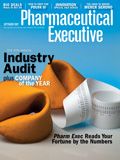
The Misinformation Maze: Navigating Public Health in the Digital Age
March 11th 2025Jennifer Butler, chief commercial officer of Pleio, discusses misinformation's threat to public health, where patients are turning for trustworthy health information, the industry's pivot to peer-to-patient strategies to educate patients, and more.
Navigating Distrust: Pharma in the Age of Social Media
February 18th 2025Ian Baer, Founder and CEO of Sooth, discusses how the growing distrust in social media will impact industry marketing strategies and the relationships between pharmaceutical companies and the patients they aim to serve. He also explains dark social, how to combat misinformation, closing the trust gap, and more.